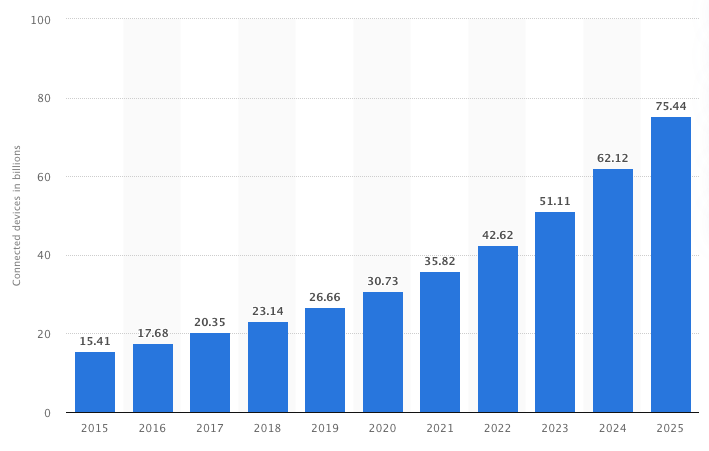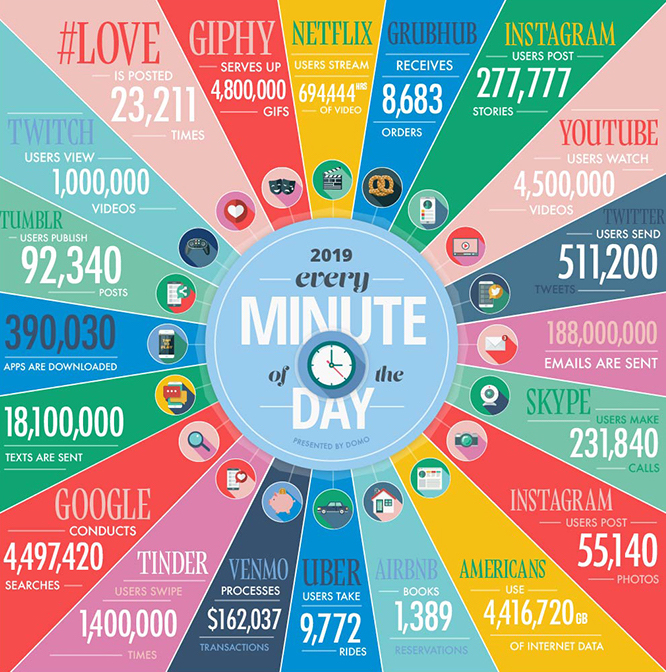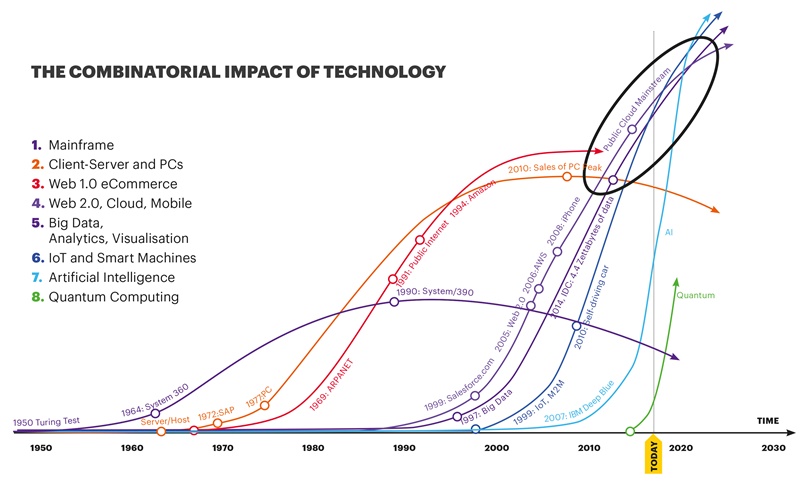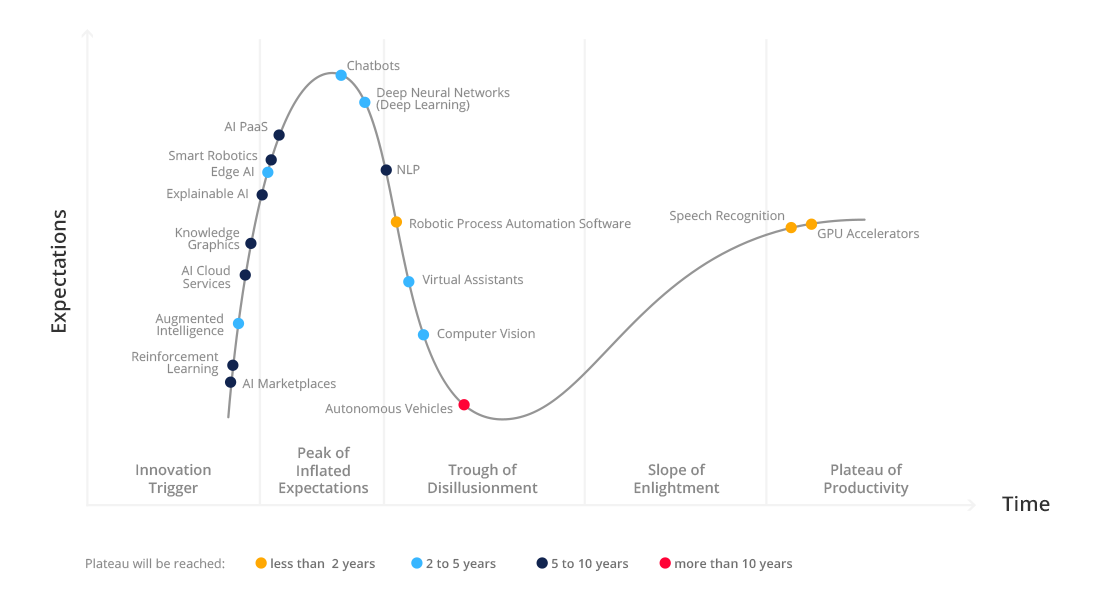




Which are the three mega revolutionary trends that we are experiencing today and that involve everyone, from individuals, to businesses and institutions? Here’s the answer!
First of all, the Internet of Things (IoT). Today, in fact, boundaries between the physical and the digital world are getting fuzzier and fuzzier: we use refrigerators connected to the Internet, which suggest us recipes and automatically adjust the temperature based on the type and quantity of products contained inside; while going jogging, we wear smart devices that monitor our heart beat in real time; if we have diabetes, a special patch with microsensors measures the sugar level in our blood and warns us when we need to take insulin. We are surrounded by millions and millions (ca. 27 billion in 2019) of objects connected to the Internet that generate billions of billions of data and information.
 Internet of Things (IoT) connected devices installed base worldwide from 2015 to 2025 (in billions, source: statista.com)
Internet of Things (IoT) connected devices installed base worldwide from 2015 to 2025 (in billions, source: statista.com)
And this brings us to the second trend – data. Or better said, big data. Today, everything is becoming data. Every day we produce around 2.5 quintillion bytes of data (that is 1 followed by 30 zeros!). It is such an incredibly large volume, that sometimes it is really difficult to discover the opportunities that lie behind it.

Data Never Sleeps (source: DOMO.com, 2019)
But it is not only the volume of data that characterizes big data, there are two other fundamental aspects that determine its relevance as a megatrend: velocity and variety. Those 2.5 quintillions of bytes produced every day are not static data; they are rather constant flows, which often generate value just within a certain (sometimes even short) timeframe. To be clear, I don’t need to know the sugar level in my blood I had three days ago, I have to know it now, when I need to take the correct dosage of insulin.
Moreover, data is not just numbers, but it has different formats: texts, images, videos. In technical jargon, this type of data represent unstructured data, which differ from structured data in that it is not easy to process because stored without any scheme. And we know pretty well how the value, usefulness and intrinsic power of data depend exactly on the ability to know how to read and understand it in the precise moment it is needed.
However, to timely and accurately analyze and process the huge amount of data we generate on a daily basis, people are not enough – we need some more help. And here is the factor introducing us to the third mega technological trend, Artificial Intelligence.
 Revolutionary tech trends (source: Accenture, 2019)
Revolutionary tech trends (source: Accenture, 2019)
Generally speaking, Artificial Intelligence is meant as the technology allowing us to interpret data (structured and unstructured) on a large scale, automatically. But looking deeper inside, AI has many shades – applications – depending on whether all or only some of the functions of the human mind are reproduced.
Some of them are already established, others are still at the beginning, but with good chances to turn into successful products and services. The Hype Cycle developed by Gartner for AI applications gives an idea of the (r)evolution to expect!
 Gartner’s Hype Cycle for AI, 2019 (revised)
Gartner’s Hype Cycle for AI, 2019 (revised)
Over the past 5 years, the number of systems using this technology has increased exponentially and, as a mega technological trend, the impacts these systems have on our everyday lives have significantly grown. Of course, the higher the level of complexity is, the greater is the impact. In the end, every revolution brings along new changes to face, in particular cultural and social changes.
This happens because AI is not just about opportunities, but also about important questions related to moral and ethical aspects and in this context, the role of the institutions becomes fundamental to regulate the situation.
Recent guidelines set by the European Commission underline the need to create a strategy at the European level – similarly to what has been done with the GDPR for the protection of personal data – in order to “give a direction” and ensure that Artificial Intelligence applications take into account ethical aspects and are based on a human-centric approach. In other words, to set the boundaries to the development of advanced Artificial Intelligence systems, without however blocking the way to an increasingly digital and automated future.
To sum up: Internet of Things, Big Data and Artificial Intelligence – these are the three mega technological trends that are revolutionizing the world … and in U-Hopper we embrace them all! We started with the IoT and in 2018 we spinoffed a company, ThinkInside , active in the field of analytics for indoor spaces.
Today in U-Hopper we develop Big Data Analytics and Artificial Intelligence solutions with the aim of supporting companies on their way towards Digital Transformation . To find out more, visit our website or drop us an email to info@u-hopper.com .